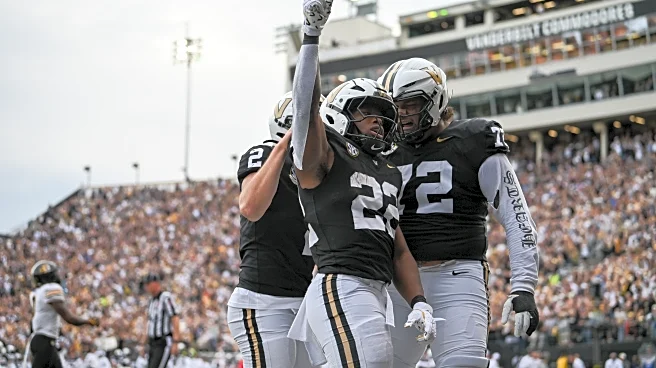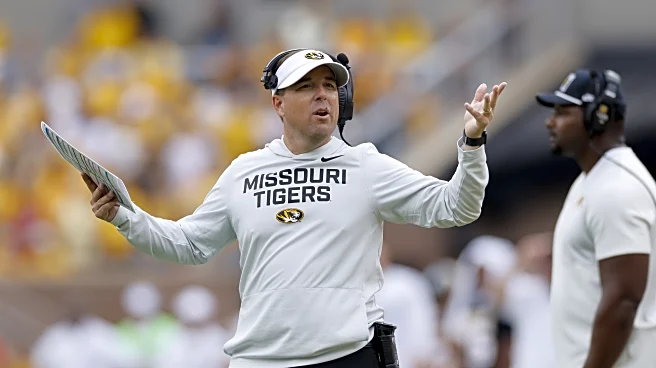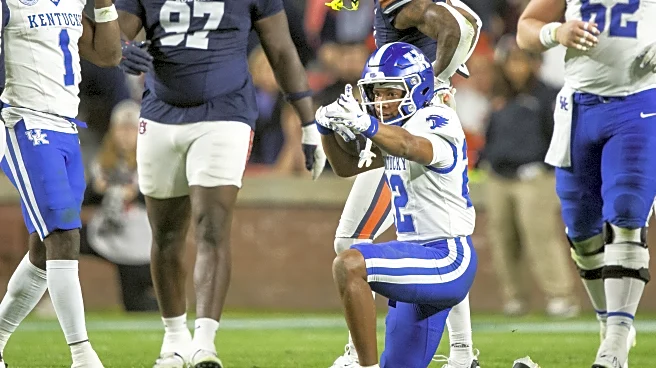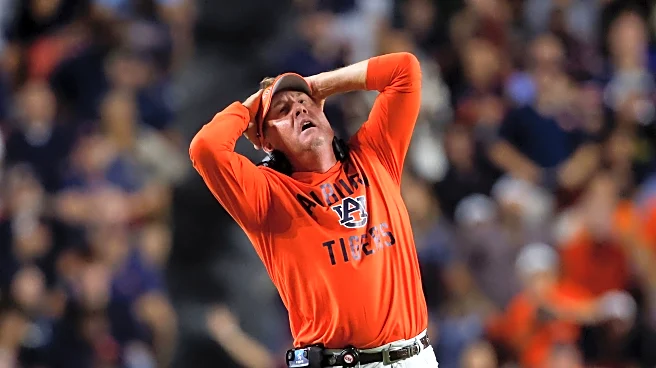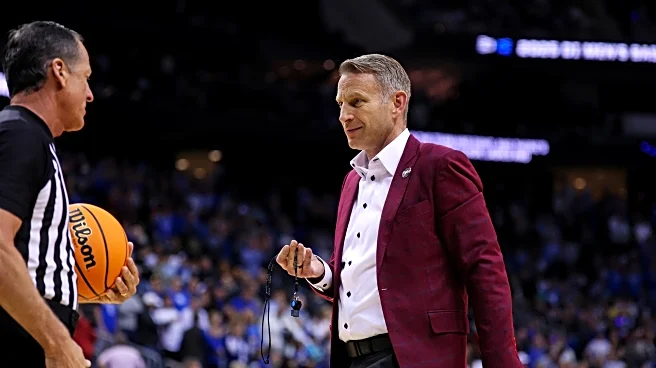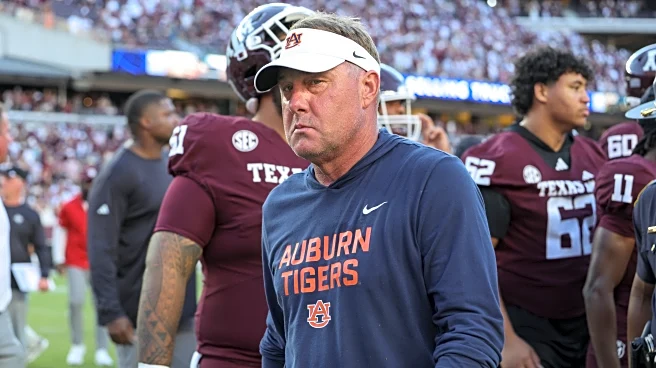What's Happening?
The college football coaching carousel is undergoing significant changes, as the traditional hierarchy of coaching jobs is being reevaluated. Historically, certain schools within the Southeastern Conference
(SEC) were considered more prestigious, leading coaches to leave their positions for perceived better opportunities. However, the landscape has shifted, with schools like Ole Miss now viewed on par with Florida, LSU, and Auburn. This change is influenced by factors such as expanded College Football Playoffs, revenue sharing, and Name, Image, and Likeness (NIL) payments, which have altered the attractiveness of coaching positions. Coaches like Lane Kiffin at Ole Miss are now considering staying put rather than moving to traditionally higher-ranked programs, reflecting a broader trend where personal satisfaction and program stability are becoming more important than historical prestige.
Why It's Important?
The evolving dynamics in college football coaching have significant implications for the sport. As the traditional pecking order of coaching jobs changes, schools that were once considered stepping stones are now competitive destinations. This shift impacts recruitment, team performance, and the overall competitiveness of the league. Coaches are increasingly prioritizing stability and the potential for long-term success over the pressure and expectations associated with historically prestigious programs. This could lead to more parity in college football, as schools with strong NIL programs and supportive administrations become more attractive to top coaching talent. The change also suggests a potential shift in how success is measured, with playoff appearances becoming a key metric rather than just conference titles.
What's Next?
As the coaching carousel continues, schools will need to adapt to the new dynamics by enhancing their NIL offerings and ensuring administrative support to attract and retain top coaching talent. The upcoming months will be crucial as schools finalize their coaching hires, potentially leading to unexpected decisions and shifts in the coaching landscape. Coaches like Lane Kiffin and others in similar positions will weigh their options, considering both financial packages and the overall environment of their current programs. The decisions made during this period will likely set the tone for the next few years in college football, influencing team strategies and competitive balance.
Beyond the Headlines
The shift in coaching dynamics also raises questions about the long-term sustainability of the current college football model. As playoff expansion increases pressure on coaches, there is a risk of higher turnover rates and less job security. This could lead to a more volatile coaching market, similar to professional sports leagues. Additionally, the emphasis on NIL and revenue sharing may widen the gap between schools with strong financial backing and those without, potentially impacting the overall equity of the sport.


